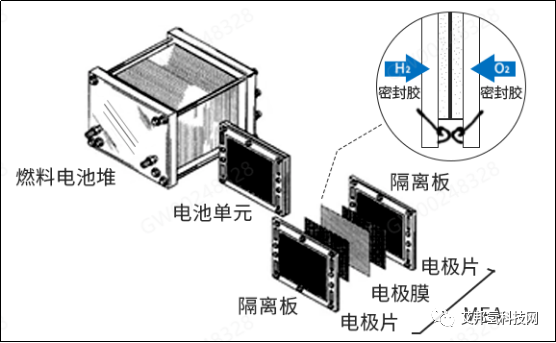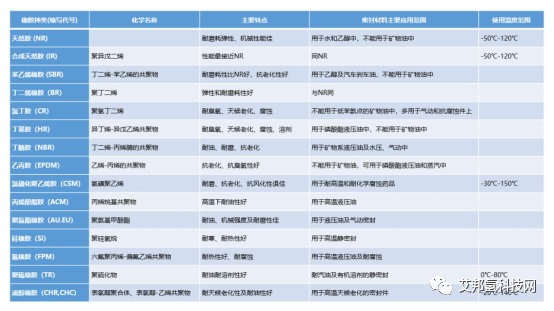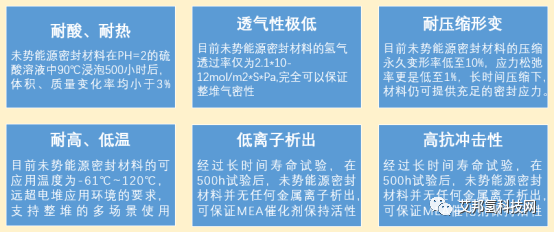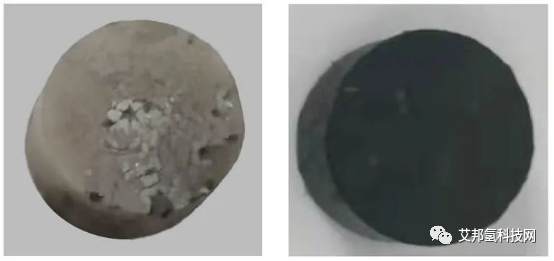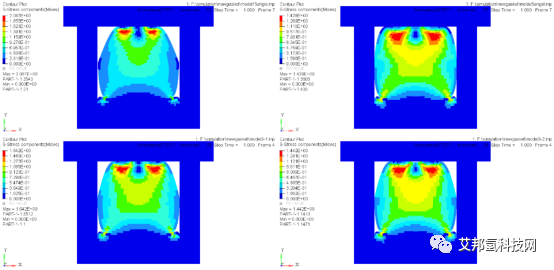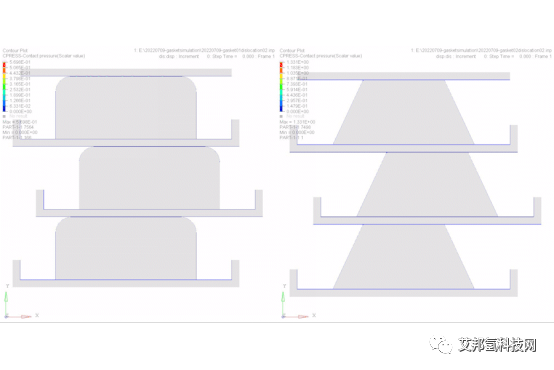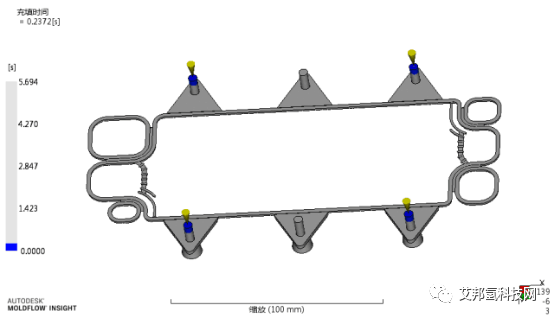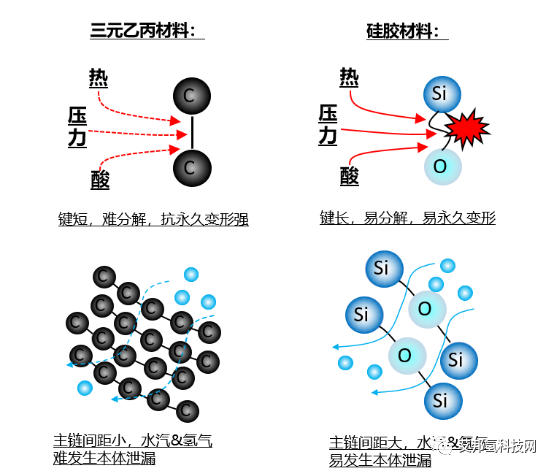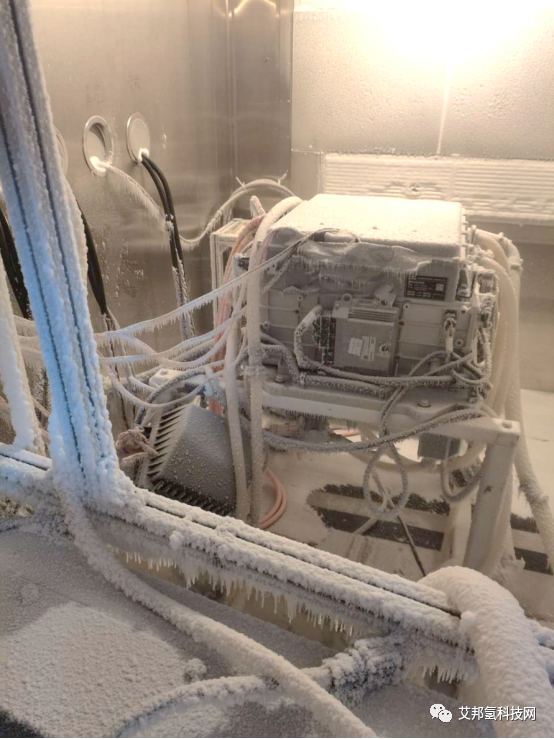First, the importance of fuel cell stack sealingThe fuel cell stack consists of a large number of identical single cell assemblies, and each group of single cells needs to form a closed cavity to ensure that fluids such as hydrogen, air and coolant do not leak.
When the single cells of each group are connected, they must also be tightly sealed. Poor sealing will lead to the leakage of hydrogen and coolant, reduce the utilization rate of hydrogen, and affect the performance and efficiency of the fuel cell. In severe cases, the battery will not work, affect the battery life, and even have safety problems.
Second, the challenges faced by the stack sealIn order to improve the bulk power density and peak power of the stack, bipolar plates and membrane electrodes will develop in the ultra-thin direction in the future, and the reaction gas pressure of high-power stack with high bulk power density is high, so it is a great challenge to seal the high-pressure gas in micron-scale space.
At the same time, the structure of a single battery determines that the shape of the sealing structure must be slender, and the total sealing length of the 100-kilowatt stack even reaches 1000m, but in fact, the failure of 1mm sealing will lead to the unqualified air tightness of the whole stack, so it is extremely difficult to achieve strict sealing of the 100-kilowatt stack.
Three, the core factors affecting the key technology of high-power stack sealingThe sealing technology of fuel cell stack is usually to apply sealant between bipolar plates and then assemble them by pressing.
Schematic diagram of stack structure
Schematic diagram of single battery seal
According to the analysis, Wuwei Energy believes that in order to achieve good sealing effect, it is necessary to develop materials with long service life and high sealing stress to match the advanced multi-layer sealing design, and it is necessary to have high-precision and high-efficiency preparation methods to support it at the technological level.
At the same time, it is necessary to develop appropriate test methods and strategies according to the operating conditions of the whole vehicle, and finally reliable sealing of high-power stacks can be achieved.
1. Development of ultra-durable sealing materialsThe special working environment of the stack matches the running conditions of the whole vehicle, which makes the common materials basically unable to give consideration to the sealing performance and sealing life. Therefore, Wuwei Energy and Noble Rubber developed a special sealing material for full-power stack: EPDM (ethylene propylene diene monomer).
Common sealing materials and physical parameters
After a large number of material formula development and physical parameter tests, the database of sealing materials has been established by Potential Energy, and the sealing materials with the best performance and the longest life can be matched according to different working conditions. Through extremely strict material grade characterization tests and the actual measurement of the whole stack life, it is judged that the sealing life of the sealing materials currently used by Potential Energy is far more than 20000h h..
Material durability test: silica gel, a common sealing material for stack, is on the left, and -EPDM, a potential second-generation sealing material, is on the right.
2. Design of multi-layer high stress seal structureThe design of sealing structure largely determines the sealing performance and service life. At present, the main design contents include section shape, section size and overall size design.
The advanced step seal is adopted, which realizes the sealing effect of low compression, long life and large stress, and ensures that the whole stack can reach the sealing life of 20000h;
Potential energy seal has strong dislocation robustness, and will not leak under the support of automatic and high-precision stacking process.
Simulation analysis of stress in different sealing sections
Robust simulation of seal dislocation
3. High-precision seal manufacturing processThe high-precision injection molding process of EPDM was customized by combining Wuwei Energy and Noble Rubber. On the premise of not changing the compression characteristics and durability characteristics of EPDM, the Mooney viscosity of the material was adjusted several times. The optimal mold design was confirmed by simulation analysis of mold flow and shrinkage rate, which ensured the feasibility of injection molding of EPDM.
Simulation analysis of injection mold flow
The EPDM material was vulcanized directly to the polar plate, and the final product achieved a height tolerance of < 0.015 mm and a position accuracy of < 0.02 mm. At the same time, the processes of pretreatment, transportation, injection molding, loading and unloading were fully automated, and the production efficiency was improved to < 3 min/piece, which fully met the requirements of thousands of sets.
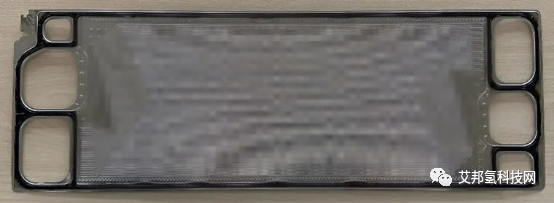
Injection molded sealing plate
Air tightness evaluation is also a key link. Bipolar plates and stacks with no potential energy will be 100% tested for air tightness before they go offline to ensure zero leakage. The testing items include whether hydrogen, air and coolant leak to the outside, whether the reaction gas and coolant in the stack leak each other in series, and so on.
At present, the air tightness of the potential energy stack can reach the leakage rate of < 0.5 cc/min, which fully meets the needs of the whole vehicle.
High and low temperature alternating cycle impact
For different application scenarios, the stack was stored at 70℃ and -40℃ for more than 12 hours, and the air tightness of the whole stack was tested at high temperature and low temperature. According to the running conditions of the whole vehicle, it was tested whether the air tightness of the whole stack could meet the requirements under the condition of alternating cycle impact at high and low temperatures.
The final result shows that compared with the air tightness at room temperature, the fluctuation value is less than 10%, judging that the current stack can meet the air tightness requirements under any working conditions of-70℃ ~-40℃, and combining with the current air tightness fluctuation value of the whole stack after 7000h on a real vehicle, it can be determined that the stack with no potential energy has passed the above comprehensive evaluation and verification, and really has the characteristics of zero leakage and long service life.
Source: untapped energy


